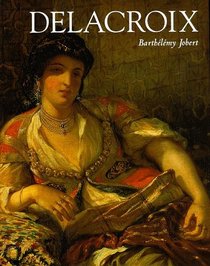Search -
Delacroix
Delacroix
Author:
Responding to resurgent interest in nineteenth-century French painting--with its rich connections to revolutionary politics, exoticism, romance, and nationalism--Barthélémy Jobert offers this long-awaited, first comprehensive book on one of the period's greatest and most elusive artists: Eugtne Delacroix (1798-1863). This solitary ... more »
Author:
Responding to resurgent interest in nineteenth-century French painting--with its rich connections to revolutionary politics, exoticism, romance, and nationalism--Barthélémy Jobert offers this long-awaited, first comprehensive book on one of the period's greatest and most elusive artists: Eugtne Delacroix (1798-1863). This solitary ... more »
ISBN-13: 9780691004181
ISBN-10: 0691004188
Publication Date: 9/28/1998
Pages: 336
Rating: ?
ISBN-10: 0691004188
Publication Date: 9/28/1998
Pages: 336
Rating: ?
0 stars, based on 0 rating
Publisher: Princeton University Press
Book Type: Hardcover
Members Wishing: 0
Reviews: Amazon | Write a Review
Book Type: Hardcover
Members Wishing: 0
Reviews: Amazon | Write a Review
Genres:
- Arts & Photography >> Individual Artists >> ( D-F ) >> Delacroix, Eugene
- Arts & Photography >> Individual Artists >> General
- Arts & Photography >> Art >> Painting >> General




